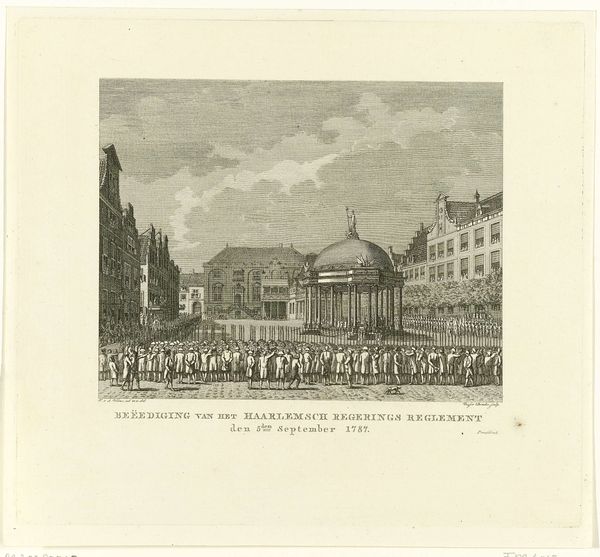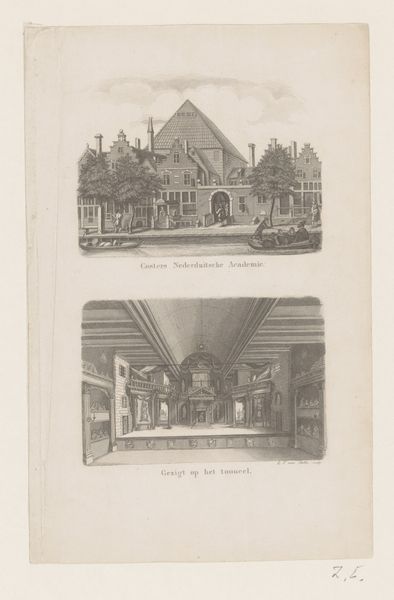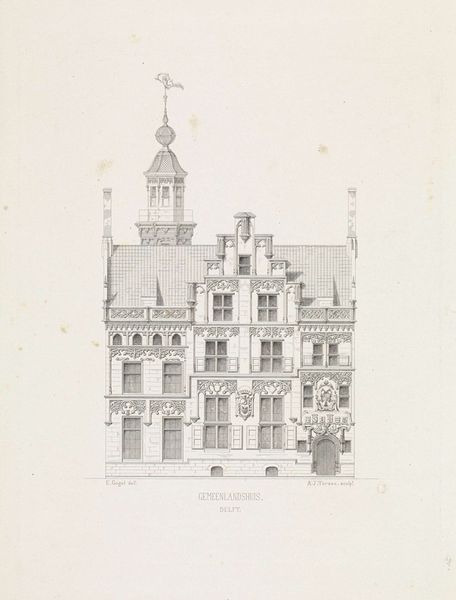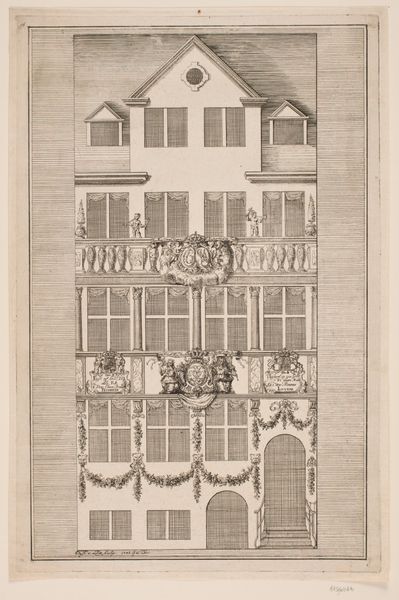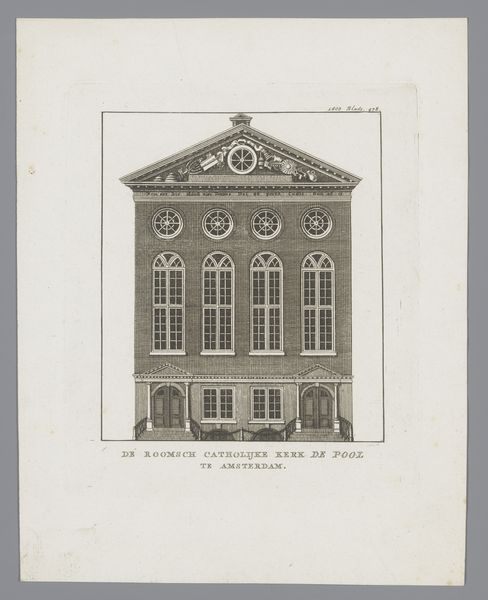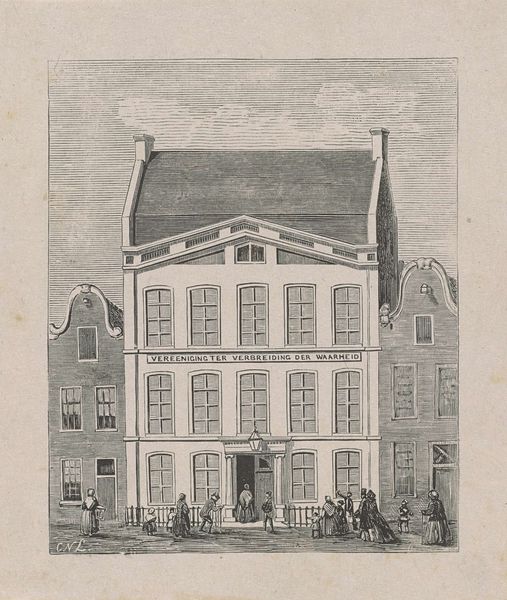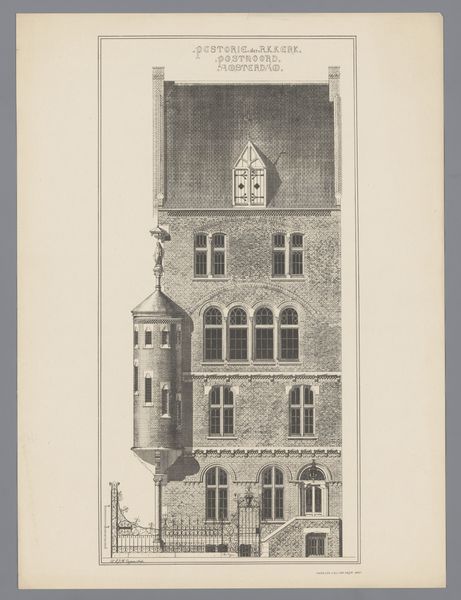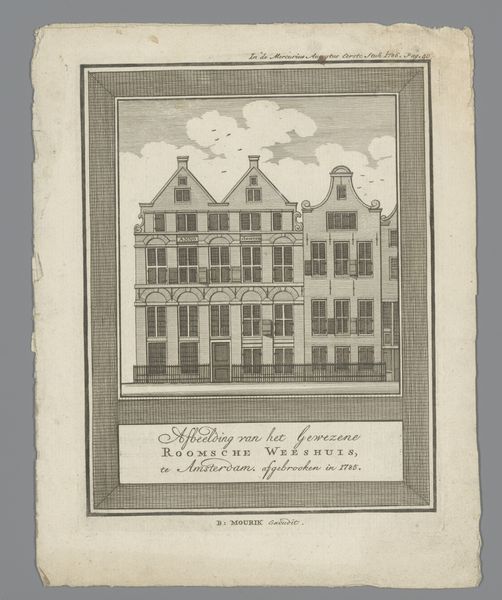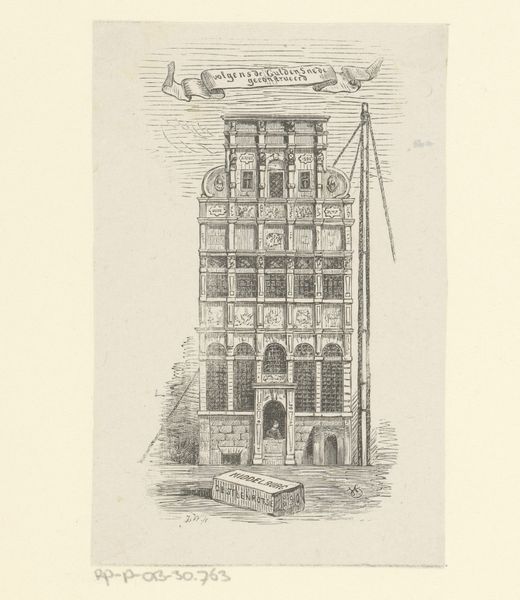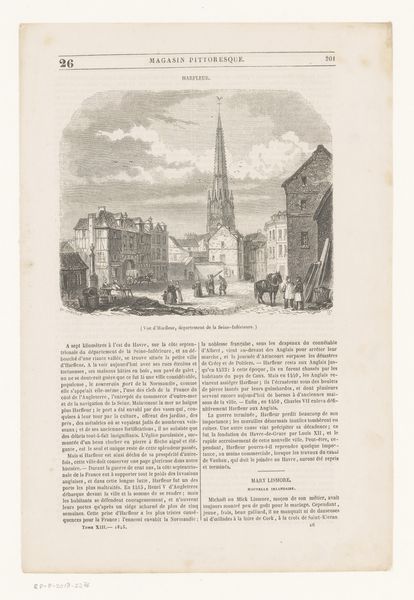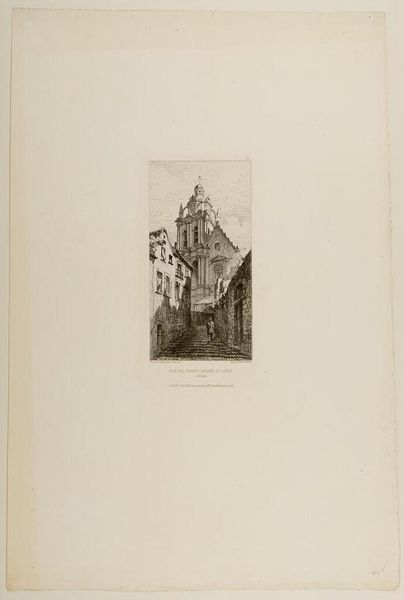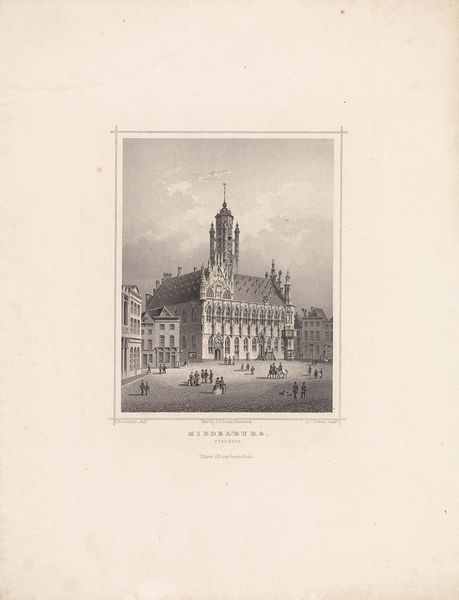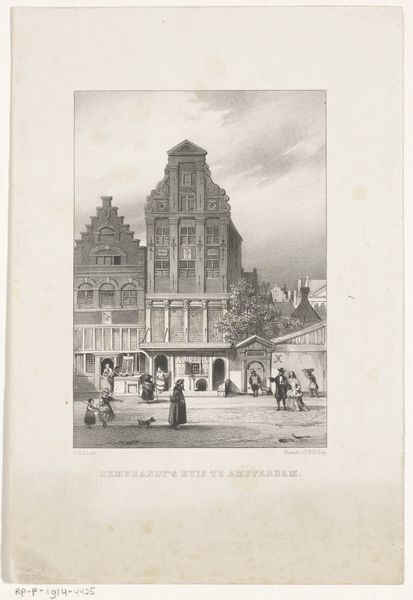
drawing, graphic-art, paper, ink
#
drawing
#
graphic-art
#
paper
#
ink
#
geometric
#
line
#
cityscape
Dimensions: height 313 mm, width 218 mm
Copyright: Rijks Museum: Open Domain
Editor: Here we have “Kermisprent van de Amsterdamse nachtwacht voor het jaar 1856,” or “Fairground print of the Amsterdam Night Watch for the year 1856,” created in 1856 by Friedrich Robert Prinz, using drawing, graphic arts, ink, and paper. It’s…interesting. It seems to be depicting buildings, maybe post offices, but framed with this very ornate border. How would you interpret this work, considering its context? Curator: Well, its context is crucial. We need to consider how these types of popular prints functioned within 19th-century Amsterdam. These weren't necessarily "high art," but served more as commemorative or satirical documents. The "Night Watch" reference in the title…are we meant to connect it directly with Rembrandt’s painting? Editor: That’s what I wondered. It feels… disconnected. Like the title is just a hook? Curator: Possibly. Think about the socio-political landscape at the time. Was the postal service undergoing changes? Was there public sentiment regarding these new buildings? This print might be subtly commenting on modernization, using a famous artwork as a reference point to grab attention and maybe make a point about civic pride, or even the pace of change. Consider how institutions like the postal service were becoming increasingly central to daily life. Editor: So it's not just about the image, but what that image meant to people at the time, and what kind of conversations it was starting. Curator: Exactly. The visual puns, the implied commentary – it's all part of understanding the image's role in shaping public discourse. And, how its existence today allows insight into its value judgements and concerns. Editor: That makes me think about how we shape those conversations even now through museums. I didn't realize how relevant the role of art can be with the public discourse! Curator: Absolutely, we are all just voices building that discussion together, in this historical moment.
Comments
No comments
Be the first to comment and join the conversation on the ultimate creative platform.

